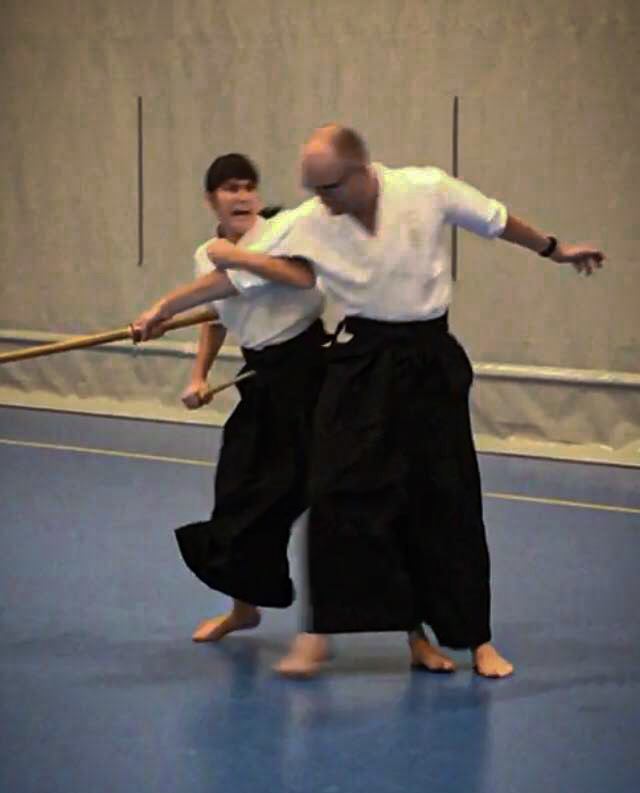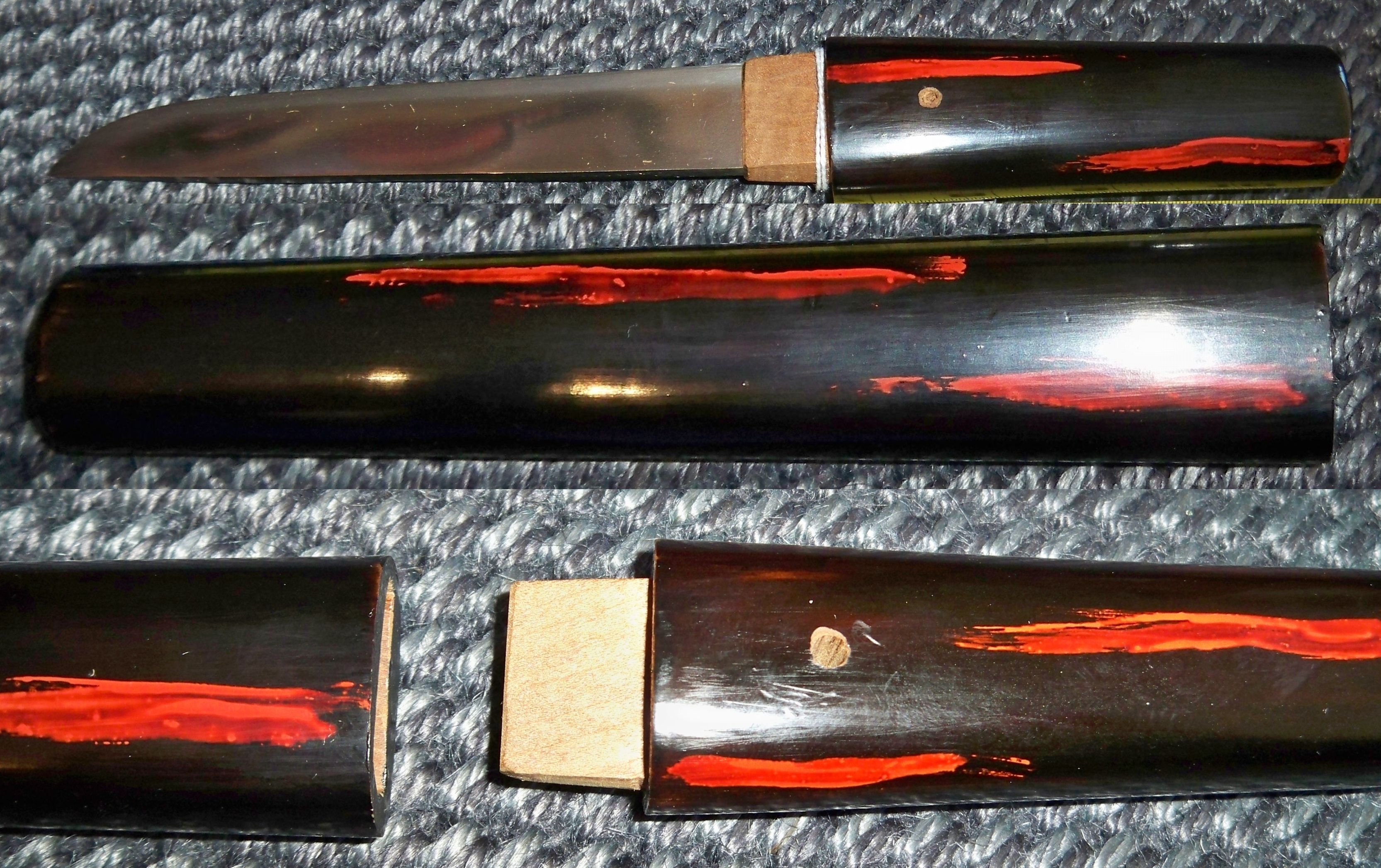|
Tantojutsu
Tantōjutsu (短刀術) is a Japanese term for a variety of traditional Japanese knife fighting systems that used the tantō (短刀), a knife or dagger. Historically, many women used a version of the tantō, called the kaiken, for self-defense, but warrior women in pre-modern Japan learned one of the tantōjutsu arts to fight in battle. Martial arts that practise tantōjutsu Tantō with blunt wooden or plastic blades are used to practice martial arts. Metal blades can be used in more advanced training and in demonstrations. Styles that use tantō: Budō (Gendai): * Aikido * Shorinji Kempo Bugei: * Yanagi-ryu Aiki Bugei Bujutsu (Koryū): * Kashima Shin-ryū (this '' ryūha'' uses term Kaikenjutsu) * Takamura-ha Shindo Yoshin-ryu See also * Kaiken (dagger) * Wakizashi The is one of the traditionally made Japanese swords (''nihontō'') worn by the samurai in feudal Japan. History and use The production of swords in Japan is divided into specific time periods: [...More Info...] [...Related Items...] OR: [Wikipedia] [Google] [Baidu] |
Tantojutsu
Tantōjutsu (短刀術) is a Japanese term for a variety of traditional Japanese knife fighting systems that used the tantō (短刀), a knife or dagger. Historically, many women used a version of the tantō, called the kaiken, for self-defense, but warrior women in pre-modern Japan learned one of the tantōjutsu arts to fight in battle. Martial arts that practise tantōjutsu Tantō with blunt wooden or plastic blades are used to practice martial arts. Metal blades can be used in more advanced training and in demonstrations. Styles that use tantō: Budō (Gendai): * Aikido * Shorinji Kempo Bugei: * Yanagi-ryu Aiki Bugei Bujutsu (Koryū): * Kashima Shin-ryū (this '' ryūha'' uses term Kaikenjutsu) * Takamura-ha Shindo Yoshin-ryu See also * Kaiken (dagger) * Wakizashi The is one of the traditionally made Japanese swords (''nihontō'') worn by the samurai in feudal Japan. History and use The production of swords in Japan is divided into specific time periods: [...More Info...] [...Related Items...] OR: [Wikipedia] [Google] [Baidu] |
Knife Fight
A knife fight is a violent physical confrontation between two or more combatants in which one or more participants is armed with a knife.MacYoung, Marc, ''Winning A Street Knife Fight'', (Digital format, 70 min.), Boulder, CO: Paladin Press, (January 1993) A knife fight is defined by the presence of a knife as a weapon and the violent intent of the combatants to kill or incapacitate each other; the participants may be completely untrained, self-taught, or trained in one or more formal or informal systems of knife fighting. Knife fights may involve the use of any type of knife, though certain knives, termed fighting knives, are purposely designed for such confrontations – the dagger being just one example. History Traditional schools During the long history of the knife as a weapon, many systems or schools of knife fighting have developed around the world. Each is usually distinguished by region and culture of their origin. In past centuries the repeated invasion and conquest ... [...More Info...] [...Related Items...] OR: [Wikipedia] [Google] [Baidu] |
Tantō
A is one of the traditionally made Japanese swords ( ''nihonto'') that were worn by the samurai class of feudal Japan. The tantō dates to the Heian period, when it was mainly used as a weapon but evolved in design over the years to become more ornate. Tantō were used in traditional martial arts (tantojutsu). The term has seen a resurgence in the West since the 1980s as a point style of modern tactical knives, designed for piercing or stabbing. Description The ''tantō'' is a single or double edged dagger with a length between 15 and 30 cm (1 Japanese shaku). The tantō was designed primarily as a stabbing weapon, but the edge can be used for slashing as well. Tantō are generally forged in ''hira-zukuri'' (平造) style (without ridgeline), meaning that their sides have no ridge line and are nearly flat, unlike the ''shinogi-zukuri'' (鎬造) structure of a ''katana''. Some tantō have particularly thick cross-sections for armor-piercing duty, and are called '' yoroi ... [...More Info...] [...Related Items...] OR: [Wikipedia] [Google] [Baidu] |
Kaiken
A is a long, single (or rare double-edged) knife without ornamental fittings housed in a plain mount. Uses It was once carried by men and women of the samurai class in Japan. It was useful for self-defense in indoor spaces where the long blade ''katana'' and intermediate sword ''wakizashi'' were inconvenient. Women carried them in their kimono either in a pocket-like space (futokoro) or in the sleeve pouch (tamoto) for self-defense and for ritual suicide by slashing the veins in the left side of the neck. When a samurai woman married, she was expected to carry a kaiken with her when she moved in with her husband. In modern Japan, a kaiken is worn as a traditional accessory for formal kimono, such as a furisode, uchikake and a shiromuku, tucked into their obi. Orthography Due to pronunciation changes over time, the ''kwaiken'' is now called a ''kaiken''. The kaiken is also referred to as a ''futokoro-gatana'' or a ''mamori-gatana'' (守り刀; "protection sword/blade"). ... [...More Info...] [...Related Items...] OR: [Wikipedia] [Google] [Baidu] |
Onna-musha
''Onna-musha'' (女武者) is a term referring to female warriors in pre-modern Japan. These women fought in battle alongside samurai men. They were members of the ''bushi'' (warrior) class in feudal Japan and were trained in the use of weapons to protect their household, family, and honour in times of war. They also have an important presence in Japanese literature, with Tomoe Gozen and Hangaku Gozen as famous and influential examples representing ''onna-musha''. There were also , female guards of the harems and residences of the wives and concubines of daimyō and clan leaders. Kamakura period The Genpei War (1180–1185) marked the war between the Taira (Heike) and Minamoto (Genji) clans, two very prominent Japanese clans of the late-Heian period. The epic ''The Tale of the Heike'' was composed in the early 13th century in order to commemorate the stories of courageous and devoted samurai. Among those was Tomoe Gozen, servant of Minamoto no Yoshinaka of the Minamoto clan. ... [...More Info...] [...Related Items...] OR: [Wikipedia] [Google] [Baidu] |
Aikido
Aikido ( , , , ) is a modern Japanese martial art that is split into many different styles, including Iwama Ryu, Iwama Shin Shin Aiki Shuren Kai, Shodokan Aikido, Yoshinkan, Renshinkai, Aikikai and Ki Aikido. Aikido is now practiced in around 140 countries. It was originally developed by Morihei Ueshiba, as a synthesis of his martial studies, philosophy and religious beliefs. Ueshiba's goal was to create an art that practitioners could use to defend themselves while also protecting their attackers from injury. Aikido is often translated as "the way of unifying (with) life energy" or as "the way of harmonious spirit". According to the founder's philosophy, the primary goal in the practice of aikido is to overcome oneself instead of cultivating violence or aggressiveness. Morihei Ueshiba used the phrase to refer to this principle. Aikido's fundamental principles include: (entering), , (breathing control), (triangular principle) and (turning) movements that redirect the oppo ... [...More Info...] [...Related Items...] OR: [Wikipedia] [Google] [Baidu] |
Shorinji Kempo
is a Japanese martial art claimed to be a modified version of Shaolin Kung Fu. The name ''Shōrinji Kempo'' is the Japanese reading of ''Shàolínsì Quánfǎ''. It was established in 1947 by , a Japanese martial artist and former military intelligence agent who lived in China for many years before and during World War II. Shorinji Kempo is a holistic system, whose training methods are divided into three parts: self-defence training, mental training and, health training. The basis are the concepts that "spirit and body are not separable" (心身一如: ''shinshin-ichinyo'') and that it is integral to train both "body and mind as one" (拳禅一如: ''kenzen ichinyo''). Through employing a well-organized technical course outline, Shorinji Kempo aims to help the practitioner "establish oneself" and to promote "mutual comfort". The philosophy and techniques of Shorinji Kempo are outlined in their master text, (少林寺拳法教範) ''Shōrinji-Kempō-kyōhan''. Overview Th ... [...More Info...] [...Related Items...] OR: [Wikipedia] [Google] [Baidu] |
Kashima Shin-ryū
is a Japanese '' koryū'' martial art whose foundation dates back to the early 16th century. Friday, Karl F. with Seki Humitake, ''Legacies of the Sword: The Kashima Shin-ryū and Samurai Martial Culture'', Honolulu: University of Hawai'i Press, 1997. The art developed some notoriety in Japan during the early 20th century under Kunii Zen'ya (1894-1966), the 18th generation ''sōke'' (headmaster). The current ''sōke'' is the 21st generation, Kunii Masakatsu. While the line is still headed by the Kunii family, the title of ''sōke'' is now largely honorific, and the responsibility for the preservation and transmission of the ryūha now lies in the ''shihanke'' line, currently represented by the 19th generation, Seki Humitake. History The characters ''Kashima'' 鹿島 are in honor of the deity enshrined in the Kashima Shrine located in Kashima, Ibaraki Prefecture, who is supposed to have provided the divine inspiration (''shin'' 神) for Kashima Shin-ryū. The earliest element ... [...More Info...] [...Related Items...] OR: [Wikipedia] [Google] [Baidu] |
Ryū (school)
is the Japanese term referring to a school in any discipline. The kanji itself is commonly used as a suffix. In English, the word is frequently used to refer to schools of Japanese martial art, although it can also be found used in other disciplines (for example Nihon- koryū and Sōgetsu-ryū in ikebana, Kantei-ryū in calligraphy, etc.). In the martial arts Japanese martial arts are often classified and codified into . Usually a given style will have its own curriculum, ranks and licensure system. These may be based on the parent style or a combination of sources that form the background of the system. The name of a style may have particular meaning or may simply be a location. Toyama-ryū is named for the Toyama Military Academy in Japan. In contrast, Gōjū-ryū is the ' hard-soft' style, which indicates both characteristic techniques and thematic elements that form a 'signature' of the style. Sometimes this is merged or confused with the name of the dojo A is a hal ... [...More Info...] [...Related Items...] OR: [Wikipedia] [Google] [Baidu] |
Kaiken (dagger)
A is a long, single (or rare double-edged) knife without ornamental fittings housed in a plain mount. Uses It was once carried by men and women of the samurai class in Japan. It was useful for self-defense in indoor spaces where the long blade ''katana'' and intermediate sword ''wakizashi'' were inconvenient. Women carried them in their kimono either in a pocket-like space (futokoro) or in the sleeve pouch (tamoto) for self-defense and for ritual suicide by slashing the veins in the left side of the neck. When a samurai woman married, she was expected to carry a kaiken with her when she moved in with her husband. In modern Japan, a kaiken is worn as a traditional accessory for formal kimono, such as a furisode, uchikake and a shiromuku, tucked into their obi. Orthography Due to pronunciation changes over time, the ''kwaiken'' is now called a ''kaiken''. The kaiken is also referred to as a ''futokoro-gatana'' or a ''mamori-gatana'' (守り刀; "protection sword/blade"). ... [...More Info...] [...Related Items...] OR: [Wikipedia] [Google] [Baidu] |




